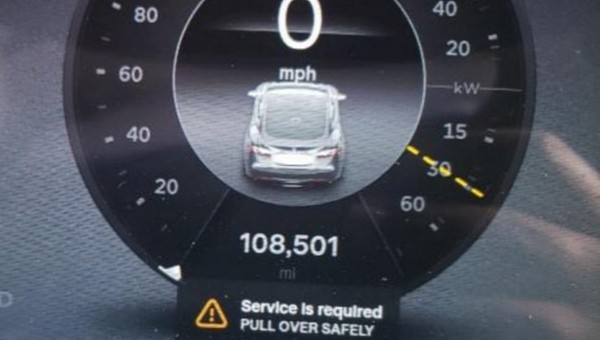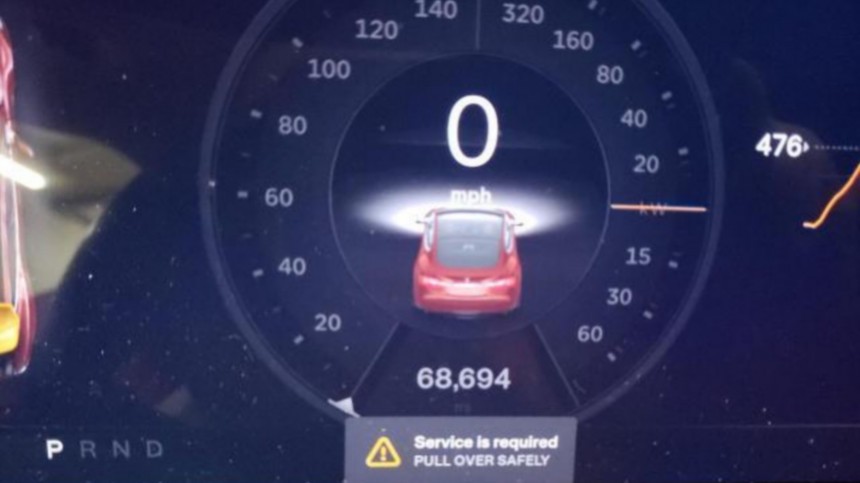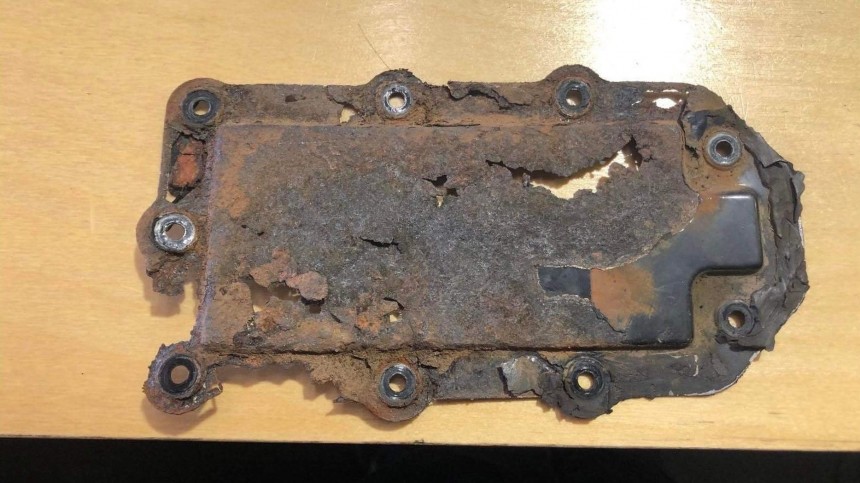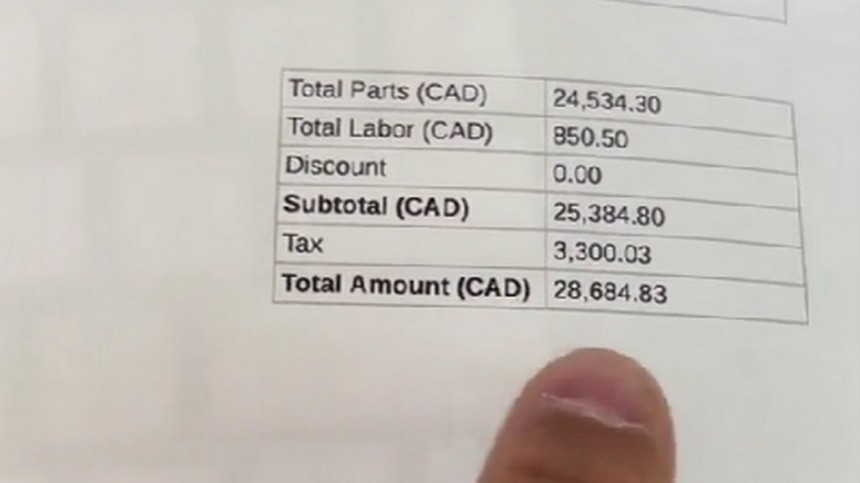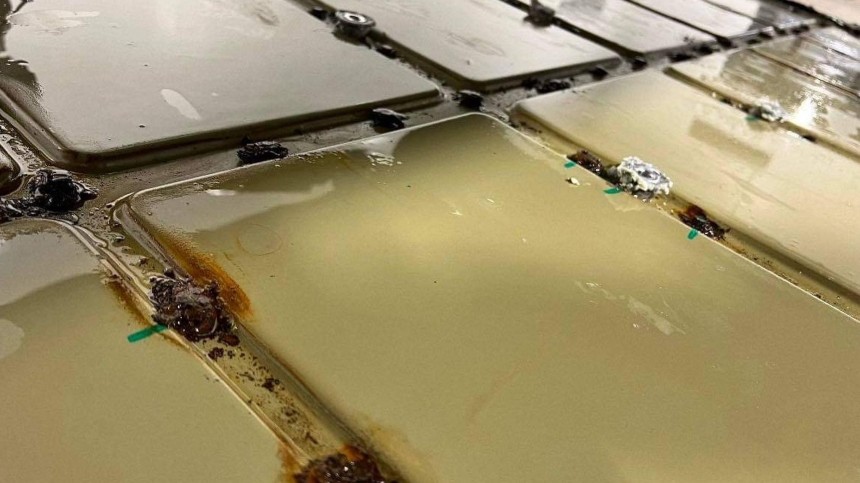The Chinese government announced Tesla would recall 80,561 vehicles due to software and seat belt issues. Among these EVs, 70,434 units were manufactured in the U.S. Yet, there are no similar recalls for these cars on American soil, which is quite strange, especially considering Tesla does not make these vehicles different for each country where it sells them.
The most significant number of vehicles affected are Model S and Model X units, made from September 25, 2013, until November 21, 2020. The 67,698 cars present the same problem: a software malfunction with the battery management system. According to the Chinese State Administration for Market Regulation (SAMR), “the feedback voltage of the power battery voltage sensing circuit may be inconsistent with the real voltage of the electric brick, resulting in a misjudgment by the battery management system."
When that happens, “the vehicle screen displays ‘requires maintenance’ and ‘safely park the vehicle.’” The EV will also “gradually cut power output, which may increase the risk of vehicle collision accidents in extreme cases, posing potential safety hazards.” In other words, the cars will suddenly stop wherever they are. Tesla proposed to fix that with an over-the-air (OTA) update, but there’s a catch.
According to SAMR, what the update does is prevent the vehicle from cutting power anywhere. The cars will keep running until the driver can safely park them or pull over in a safe location. Summing up, the recall does not repair the vehicle: it just ensures the car’s response to it might kill you. This is not the only reason for the involved Chinese customers to pay careful attention.
This situation may be related to at least two battery pack issues that the Model S and the Model X are known to present in the U.S. and Canada. Mario Zelaya reported the same messages before he discovered Tesla placed his Model S’s AC condensate drain hose right over the battery pack. The waters that dripped over the component eventually corroded the steel fuse box cover and invaded the battery pack. There are more known cases than just Zelaya’s.
The second issue is the voltage cap Tesla performed with an OTA update on the Model S and Model X in several countries where its vehicles are sold. In Norway, the company was convicted to pay 136,000 kroner ($13,740 at the current exchange rate) to 30 owners. In the U.S., the company was sued in a class action by hundreds of customers when their cars were still under warranty, which Tesla proposed to settle two years later.
With some of these cars now out of warranty, Tesla is cutting range by 50% and sending some owners invoices for a new battery pack, which costs around $20,000. In China, Tesla apparently did not cap the voltage of Model S and Model X cells with OTA updates, which would probably provoke a strong reaction from the Chinese government. The recall may be the company’s way to deal with the battery pack issues: Tesla never disclosed the cause for voltage capping the cars.
Considering the OTA update only prevents stranding the EVs in the middle of the road, the American automaker still didn’t. The customers will only discover what is happening to their cars when they take them to Tesla Service Centers. There’s a great chance they will also receive an invoice to replace the battery packs. We’d love to confirm that, but Tesla does not talk to the press.
If it did, we’d also ask why the company has recalled 2,736 Model 3 units made between January 12, 2019, and November 22, 2019, due to a safety belt defect. Although 10,127 local vehicles are also involved (their production dates were not disclosed), the fact that some were exported from the U.S. indicates more units in Tesla’s home market may also present the issue. Curiously, that may be the case regardless of the origin.
The SAMR explained that the safety hazard relates to middle seat belts on the second row that may “have been removed due to after-sales repairs and maintenance.” When “the seat belt fixing bolts are reinstalled at the service center, the fixing of the middle seat belt and the left-side seat belt buckle of some vehicles may not be screwed into the attachment bolts.” In other words, Chinese Tesla Service Centers may have left them loose.
Why did this assembly error happen in China? Hasn’t it happened anywhere else? How many Model 3 units must have gone through the same repairs in the U.S.? There is no answer to that. If you own a Model 3 and had to repair anything that demanded the rear seats to be removed, make sure the middle seat belt and the left-side seat belt buckle are firmly screwed to the car’s body.
Meanwhile, we’ll wait for Tesla to spontaneously discuss that with the National Highway Traffic Safety Administration (NHTSA) – or for the agency to demand the same explanations we cannot even ask for.
When that happens, “the vehicle screen displays ‘requires maintenance’ and ‘safely park the vehicle.’” The EV will also “gradually cut power output, which may increase the risk of vehicle collision accidents in extreme cases, posing potential safety hazards.” In other words, the cars will suddenly stop wherever they are. Tesla proposed to fix that with an over-the-air (OTA) update, but there’s a catch.
This situation may be related to at least two battery pack issues that the Model S and the Model X are known to present in the U.S. and Canada. Mario Zelaya reported the same messages before he discovered Tesla placed his Model S’s AC condensate drain hose right over the battery pack. The waters that dripped over the component eventually corroded the steel fuse box cover and invaded the battery pack. There are more known cases than just Zelaya’s.
With some of these cars now out of warranty, Tesla is cutting range by 50% and sending some owners invoices for a new battery pack, which costs around $20,000. In China, Tesla apparently did not cap the voltage of Model S and Model X cells with OTA updates, which would probably provoke a strong reaction from the Chinese government. The recall may be the company’s way to deal with the battery pack issues: Tesla never disclosed the cause for voltage capping the cars.
If it did, we’d also ask why the company has recalled 2,736 Model 3 units made between January 12, 2019, and November 22, 2019, due to a safety belt defect. Although 10,127 local vehicles are also involved (their production dates were not disclosed), the fact that some were exported from the U.S. indicates more units in Tesla’s home market may also present the issue. Curiously, that may be the case regardless of the origin.
Why did this assembly error happen in China? Hasn’t it happened anywhere else? How many Model 3 units must have gone through the same repairs in the U.S.? There is no answer to that. If you own a Model 3 and had to repair anything that demanded the rear seats to be removed, make sure the middle seat belt and the left-side seat belt buckle are firmly screwed to the car’s body.
Meanwhile, we’ll wait for Tesla to spontaneously discuss that with the National Highway Traffic Safety Administration (NHTSA) – or for the agency to demand the same explanations we cannot even ask for.
